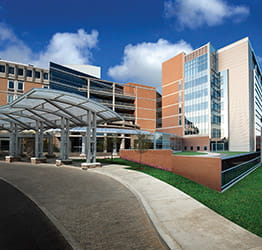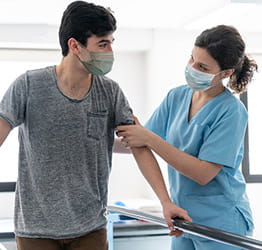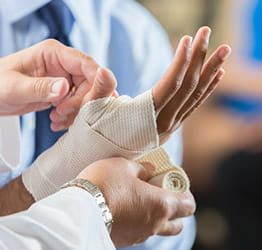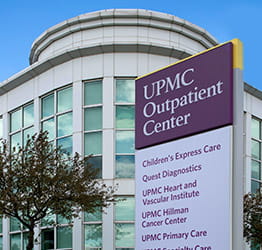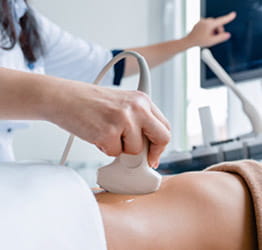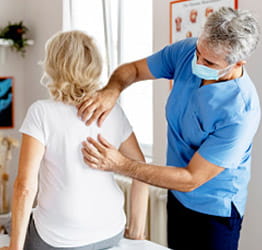Pat Godesky spent more than two decades living with peripheral artery disease (PAD) — a vascular condition that occurs when blood vessels narrow and reduce blood flow to the arms, legs, neck, or abdomen. In Pat’s case, a blockage in her aorta was restricting blood flow to her legs and kidneys.
“I tried to do things on my own, changed my diet, increased my exercise,” Pat explains. “It worked for the first 15 years.”
A native of Pittsburgh’s South Hills, Pat had stents placed in her blood vessels in 2017 to help with blood flow, but those also eventually became blocked.
In early 2024, Pat’s health took another turn when she was diagnosed with kidney disease.
“It exacerbated my PAD symptoms and affected almost every part of my body,” Pat recalls.
That July, while on vacation with her husband, Jim, Pat’s pain became so intense that she could barely walk.
Surgical intervention
In February 2025, Pat was hospitalized for congestive heart failure. A computed tomography (CT) angiogram was ordered to look at her blood vessels. Before long, the Godeskys were having a conversation with Natalie Sridharan, MD, a vascular surgeon at the UPMC Heart and Vascular Institute.
“She quickly came up with a treatment plan,” Pat says. “Dr. Sridharan explained the results of the test to me and offered guidance on how we could allow my kidneys to recover and relieve the extreme leg pain, with the ultimate goal being a normal, longer life.”
Dr. Sridharan recommended performing two procedures on a single day, which would restore Pat’s blood flow and relieve her symptoms.
On May 12, at UPMC Presbyterian, Dr. Sridharan completed an aortic endarterectomy to remove the plaque built up inside Pat’s aorta. She then turned her attention to Pat’s legs, where arterial bypass surgery rerouted blood flow around the blockage that had been causing the pain.
“Patti was in surgery for about eight hours,” Jim recalls. “Although the initial couple of weeks back home were challenging, we were surprised by the ease of the recovery process. After two months, she was nearly her normal self, walking up to six miles a day and medically cleared with no restrictions.”
“The vascular team was so responsive,” Pat adds. “They kept their eyes on me and did daily check-ins, monitoring my diet and making me feel safe.”
Life Changing Medicine
Now back home, Pat says she feels “20 years younger.”
“I can walk without pain and don’t have any restrictions anymore. Before, I couldn’t even do basic tasks without needing to sit down until I got feeling in my legs. My kidney function has been steadily improving since the surgery. If nothing had been done, I may have been on dialysis by now and looking at a possible kidney transplant.”
And the Godeskys are incredibly thankful for the surgeon who had answers when they had questions.
“Dr. Sridharan is my hero,” Jim says.
“She truly changed my life for the better," Pat adds. "UPMC’s motto is ‘Life Changing Medicine,’ and now I know how true that is.”
Pat’s treatment and results may not be representative of all similar cases.





